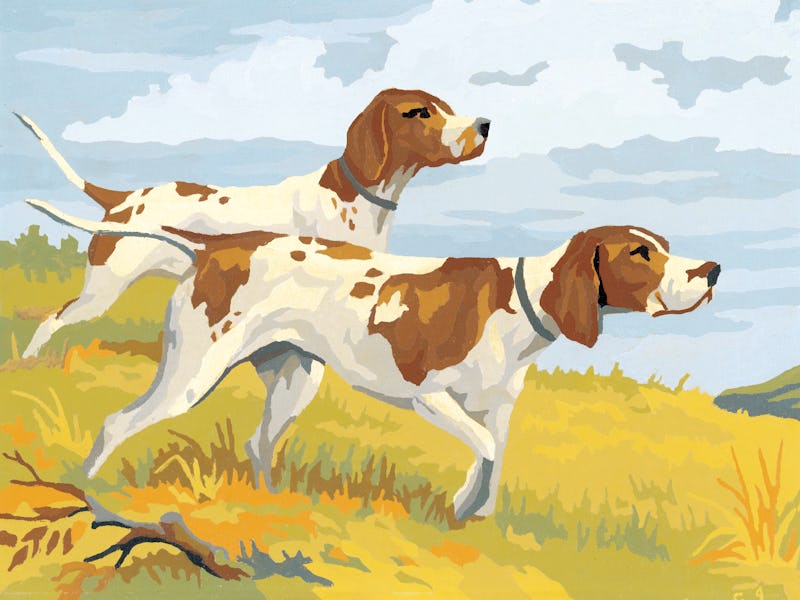Magnetic field study reveals dogs know a secret trick
Dogs make a "compass run."

If your dog tends to wander off mid-walk, he may be on to something.
New research provides the first evidence that dogs use Earth's magnetic field to navigate themselves. Scientists discovered that dogs can instinctively take shortcuts, going off-path and traversing bush, to make a journey a more efficient one.
This finding was published in June in the journal eLife.
Researchers took dogs into the woods to have them follow the scent of another animal. Most dogs followed the scent for about a quarter-mile before returning. Crucially, the researchers were most interested in how the dogs traversed back to their starting point.
The pups showed two methods of return:
- Tracking: Dogs follow the same trajectory in reverse
- Scouting: Dogs choose a completely new route
The research team zeroed in on scouting. They studied 27 hunting dogs from 10 breeds, affixing a GPS to their collars to track routes. They also fitted some of the dogs with cameras — essentially doggy GoPros — and microphones.
Fox terrier (left) and miniature dachshund (right) fitted with GPS collars and cameras.
The findings showed that, in most cases, the dogs began their return scouting routes with about a 65-foot run along the north-south axis of the Earth — regardless of the direction they had to go to get home.
Hunting dogs roam over long distances, explains study author Kateřina Benediktová, a researcher at Czech University of Life Sciences Prague. Humans would "probably get lost without a compass and a map if roaming over comparable distances in unfamiliar forested areas."
"Therefore the advantage of the orientation sense is clear," Benediktová tells Inverse.
In dense forests with variable wind conditions, it's unlikely that visual or olfactory cues can explain the "highly stereotyped and consistent" north-south run, which researchers call a "compass run." Instead, the findings suggest that the dogs are using the planet's magnetic poles to navigate.
The audio and camera equipment collected information about the animals' movement, behavior, and the surrounding landscape.
In a video, one dog-mounted camera shows the pup's turnoff point, side-by-side with a map that reveals its overall route:
Animal instincts — The new study is the first evidence of dogs making use of Earth's magnetic field, also known as the geomagnetic field.
This field extends from North and South magnetic poles thousands, and thousands, of kilometers into space, forming Earth's magnetosphere. The magnetic field protects Earth from solar wind, and it is generated by electrical currents in the planet.
Other animals, like birds and sea turtles, use the planet's magnets to navigate, too.
Exactly how dogs use the magnetic field is yet to be fully understood. The study authors hypothesize that "magnetic alignment may help to organize and structure many aspects of spatial behavior."
That means the compass run may be "instrumental for bringing the mental map into register with the magnetic compass and to establish the heading of the animal," the scientists write.
The researchers suggest that dogs, and mammals generally, may have a "'universal' reference frame, which is essential for long-distance navigation." Importantly, they say, this may be the most important piece that's still missing from researchers' understanding of mammals' spatial behavior and cognition.
Abstract: Despite anecdotal reports of the astonishing homing abilities in dogs, their homing strategies are not fully understood. We equipped 27 hunting dogs with GPS collars and action cams, let them freely roam in forested areas, and analyzed components of homing in over 600 trials. When returning to the owner (homewards), dogs either followed their outbound track (‘tracking’) or used a novel route (‘scouting’). The inbound track during scouting started mostly with a short (about 20 m) run along the north-south geomagnetic axis, irrespective of the actual direction homewards. Performing such a ‘compass run’ significantly increased homing efficiency. We propose that this run is instrumental for bringing the mental map into register with the magnetic compass and to establish the heading of the animal.